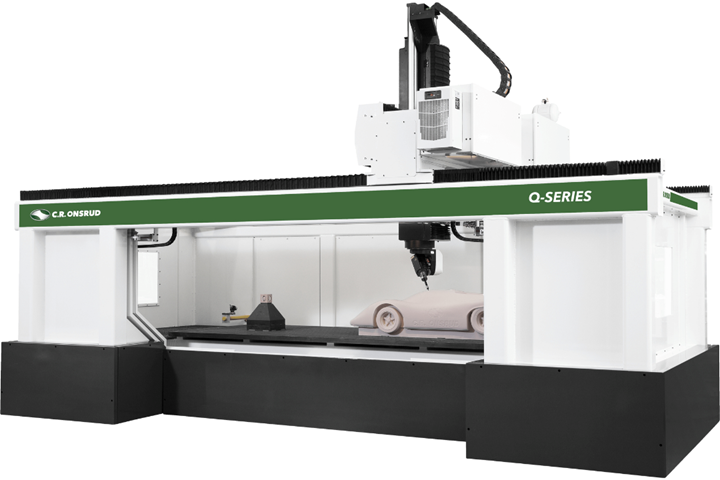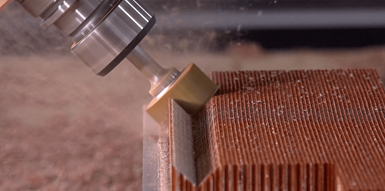Industrial CNC combats composite machining challenges
CAMX 2023: C.R. Onsrud invites attendees to learn more about its five-axis Q-Series and other composite CNC machinery options that offer fast, accurate material processing.
C.R. Onsrud (Troutman, N.C., U.S.) highlights the Q-Series five-axis industrial CNC machine and other CNC options for fast, accurate processing of composites.
The North Carolina-made five-axis Q-Series was designed, engineered and manufactured to combat composites’ ability to turn material to scrap, quickly wear out tools and create a lot of debris. According to the company, this CNC machine can produce sharp angles for quick, clean cuts of the complex composite, thermoformed plastic, foam board, wood, aluminum, carbon fiber, fiberglass and other advanced materials, additives and binding agents.
To accurately machine composites, Onsrud advises manufactures to look for:
(1) An abrasion-resistant machine build that uses high-quality, industrial-grade components that can withstand abrasive environments. The machine needs to properly seal and cover the mechanical and electronic components. Since some composite dusts are electrically conductive, they can short out machine circuits. With protected motion-controlled components and drives, users can maintain precise, linear motion and extend the life of the machine. Plus, there are additional options engineered for manufacturers working with composites (e.g., air knives clear harmful debris away from the cutting area).
(2) A fully enclosed machine with sufficient dust collection to keep operators safe from potentially hazardous composite dusts.
(3) High (18,000-24,000) rpm, low torque spindles which are more efficient, reduce cycle time, lengthen tool life and improve overall spindle reliability. Although, if machining metal, Onsrud says to consider a higher rpm range.
(4) Fixturing options (e.g., vacuum hold-down and pneumatic fixtures) that offer efficient material holding for the workpiece being cut and a fast way to change out parts without worrying about machining through a clamp or a fixture.
(5) Right-sized work envelope. Composites and molds can vary dramatically in size. The Q-Series has a work envelope of 60′ (L) × 12′ (W) × 40″ (H) and Onsrud builds machines that are larger.
“We’ve seen firsthand the game-changing impact a CNC machine can have in manufacturing composites, from increasing a shop’s capacity to improving margins while giving businesses control over the design, manufacturing and quality of their end product,” Ken Stissel, national sales manager, C.R. Onsrud, concludes.
Related Content
-
Materials & Processes: Composites fibers and resins
Compared to legacy materials like steel, aluminum, iron and titanium, composites are still coming of age, and only just now are being better understood by design and manufacturing engineers. However, composites’ physical properties — combined with unbeatable light weight — make them undeniably attractive.
-
What to expect at CAMX 2022
The Composites and Advanced Materials Expo (CAMX), the largest composites industry trade event in North America, takes place Oct. 17-20, 2022 in Anaheim, Calif., U.S.
-
CAMX 2022 exhibit preview: Leesona
Leesona showcases high-quality, precision, automatic and manual winding solutions that are capable of working with a range of composite materials and fiber thicknesses.


















